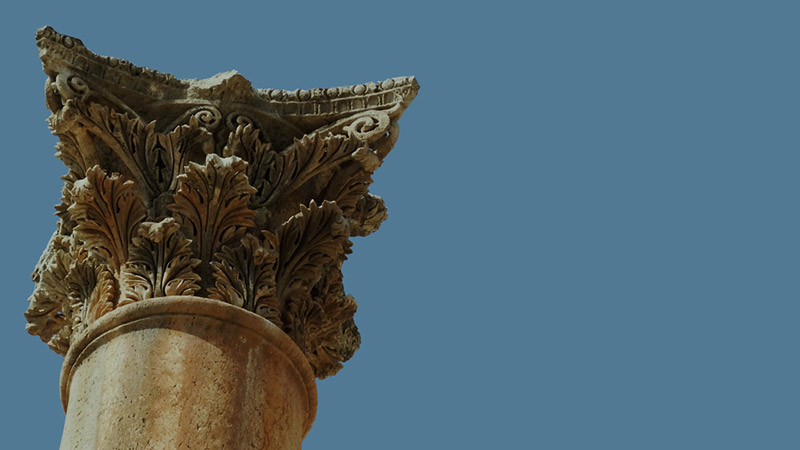More Results
Showing 12 of 125
Articles

A Far Country Decapolis
The Decapolis is mentioned by name only three times in the New Testament. In addition to these three instances, on at least two other occasions, Jesus visited specific locations in the largely pagan league of cities to the east of the Sea of Galil...
MORE
A New Tomb
Throughout Bible times, the burial ritual was regarded as very important. Jesus, sharing fully in our humanity (Heb. 2:14), was given a typical, though hurried, burial. Understanding the burial customs and practices of first-century Israel can hel...
MOREAudio

Chutzpah
In these audio teachings, Ray shares his knowledge of Jewish History and Biblical Culture.
MOREEncyclopedia

A Galilean Family Room
This room was the center of family life. It was probably used for eating, for storing food, and for socializing with extended family. Guests could be invited in if the weather was inappropriate for dining outdoors in the courtyard.A small wooden t...
MORE
An Archaeological Treasure
The Dead Sea Scrolls have been called the greatest archaeological discovery of modern times. They have dramatically enhanced our understanding of the world of the New Testament, the teachings of John the Baptist and our Lord Jesus, and the early c...
MORE
An Essene Cistern
In the Qumran community, the Essenes created several cisterns that, as shown here, were plastered and had steps to allow them to access water. At least two of these cisterns are believed to be mikvoth, ceremonial or ritual baths used for actual cl...
MORE
Burial Practices
Burial PracticesThe BodyAccording to Jewish interpretation of the Old Testament Law, burial had to occur within 24 hours (Deut. 21:23). This was partly due to the climate in Israel, and partly because the body was considered to be ceremonially unc...
MOREGlossary

Abraham Definition
The father of the Jewish nation (Gen. 12-25). God called Abraham out of his home country and promised to give him the land of Canaan (Gen. 15). God also promised that all the people on earth would be blessed through Abraham; God's people today can...
MORE
Abyss Definition
Means "bottomless pit." In the New Testament, the sea symbolized chaos, evil, and evil beings. The depths of the sea were seen as the home of demons, or the Abyss, according to Jewish tradition.At one point during his ministry, Jesus com...
MORE
Aeolia Capitolina Definition
Hadrian, the Roman emperor, destroyed Jerusalem after defeating the Jews during the Second Jewish Revolt (AD 132-135). He renamed it Aelia Capitolina and erected a temple to the Roman god Jupiter.
MORE
Bar Kochba Revolt Definition
Another name for the Second Jewish Revolt against Rome (AD 132-135). The leader of the revolt was a man named Bar Kochba.
MORE

















